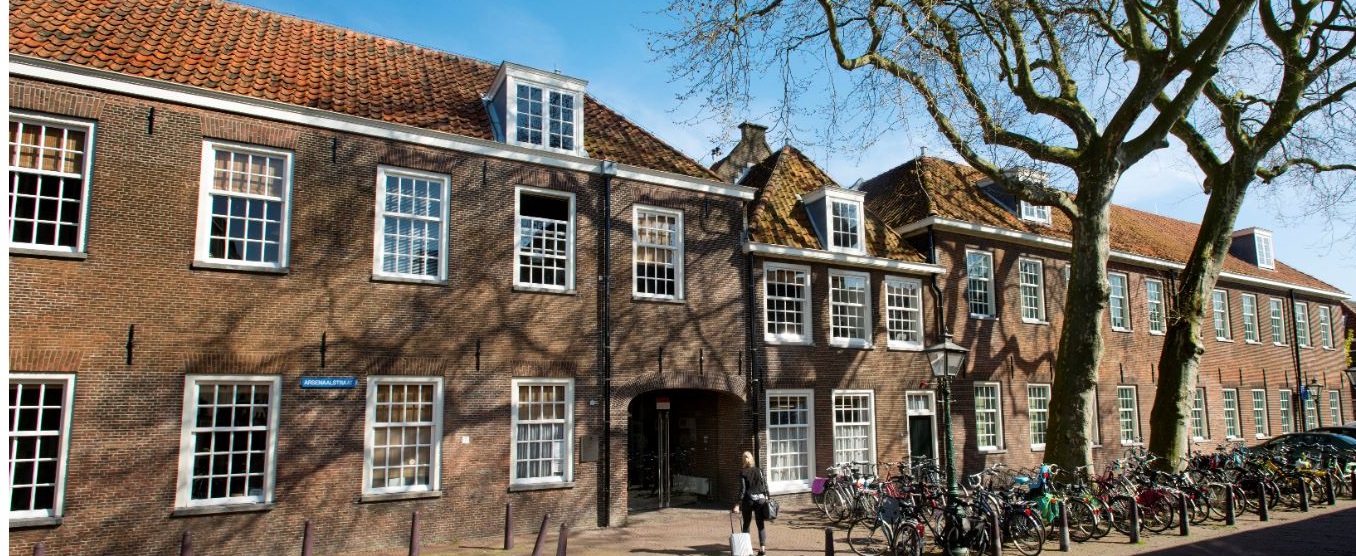Arsenaal (completed)
Internal renovation
During the internal renovation of the Arsenaal, the interior and the installations were rebuilt in order to provide the building with modern workplaces, teaching and study spaces and attractive areas to meet each other. The design was made by architects Diederik de Jonge and Ernst Hoek.
The exterior of the monumental building is made more sustainable, but at the same time remained authentic. The interior has undergone a major transformation. The renovation started in 2019, and was completed in early 2020.
How to make a monument more sustainable
During the renovation, several materials from the building were ‛harvested’, a process that is called circular dismantling. The company New Horizon reused the harvested material wherever possibile. An example of this is the wood used for the central staircase. Bricks, cables and windows are reused in other buildings.
Another goal was to make the building completely gas-free. In order to do so, the Arsenaal is maximally insulated. The windows in the facade have been replaced by double glazing and are equipped with beautiful edges from the 19th century. Besides insulation, hot and cold air is provided through the ceiling. In the attic, an ultramodern air regulation unit is placed, and on the roof the cooling systen can be found. With this technological ingenuity, the climate in the building is regulated.
The concept of smart building has been applied as well. In every room, the lighting and temperature can be automatically adjusted. The lighting is modernized with LED and turns on and off using presence detectors. When there is enough light coming from outside, the lamps will be dimmed. The sanitary features water saving flush buttons and taps.
Who are the building’s occupants?
Staff members of the institutes LUCAS (Leiden University Centre for the Arts in Society) and LUCL (Leiden University Centre for Linguistics) are using the renovated Arsenaal.
-
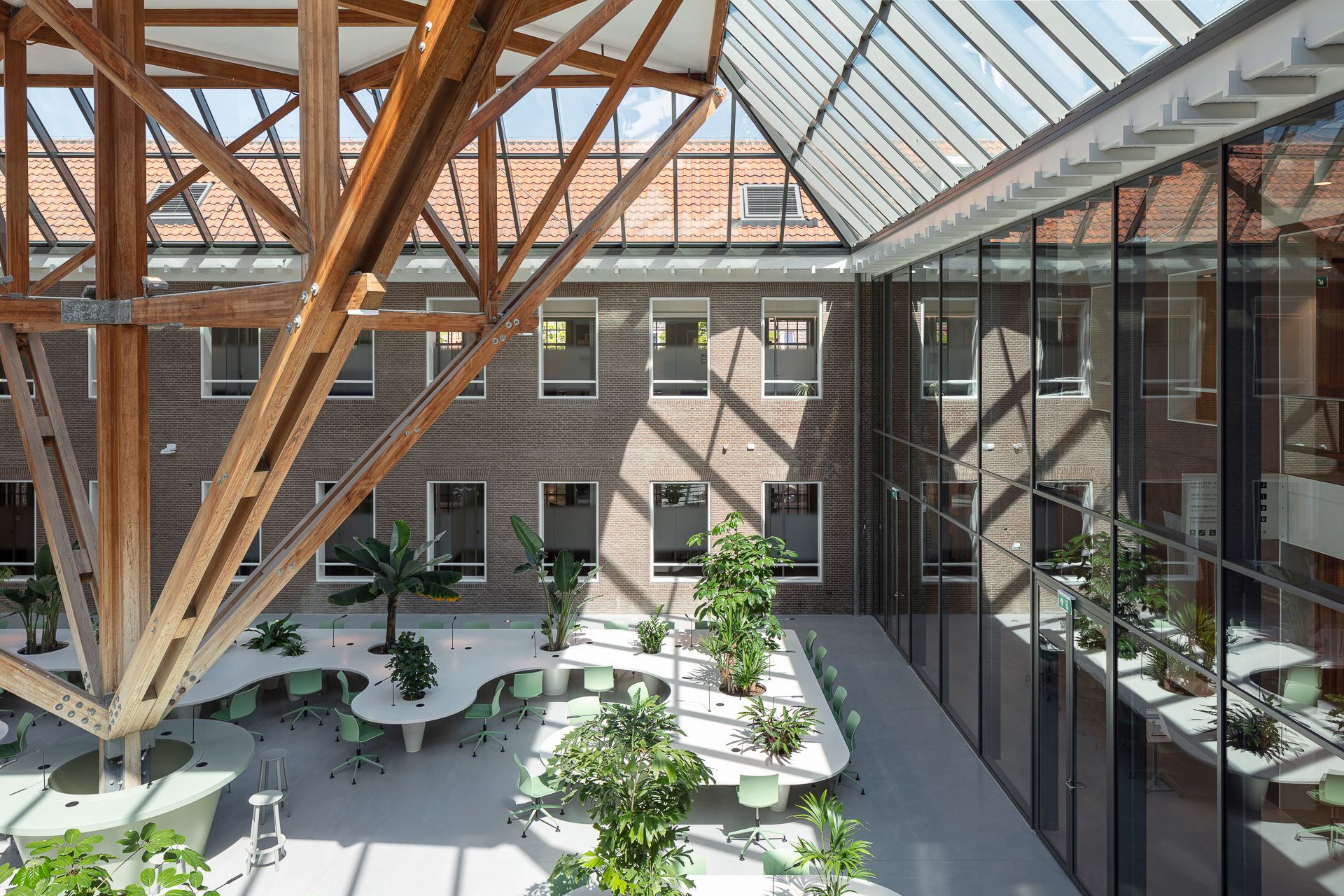
Photo: Stijn Poelstra. -
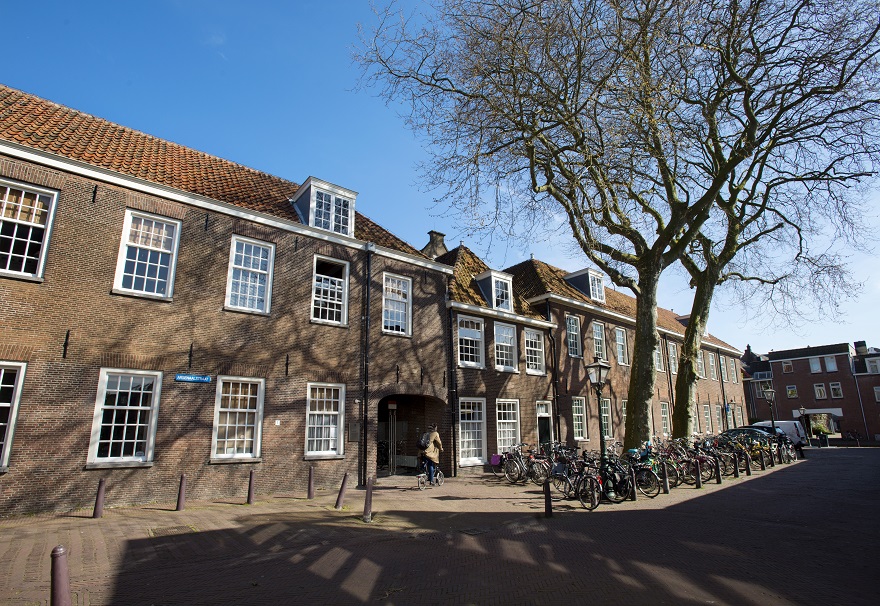
The exterior of the Arsenaal. -
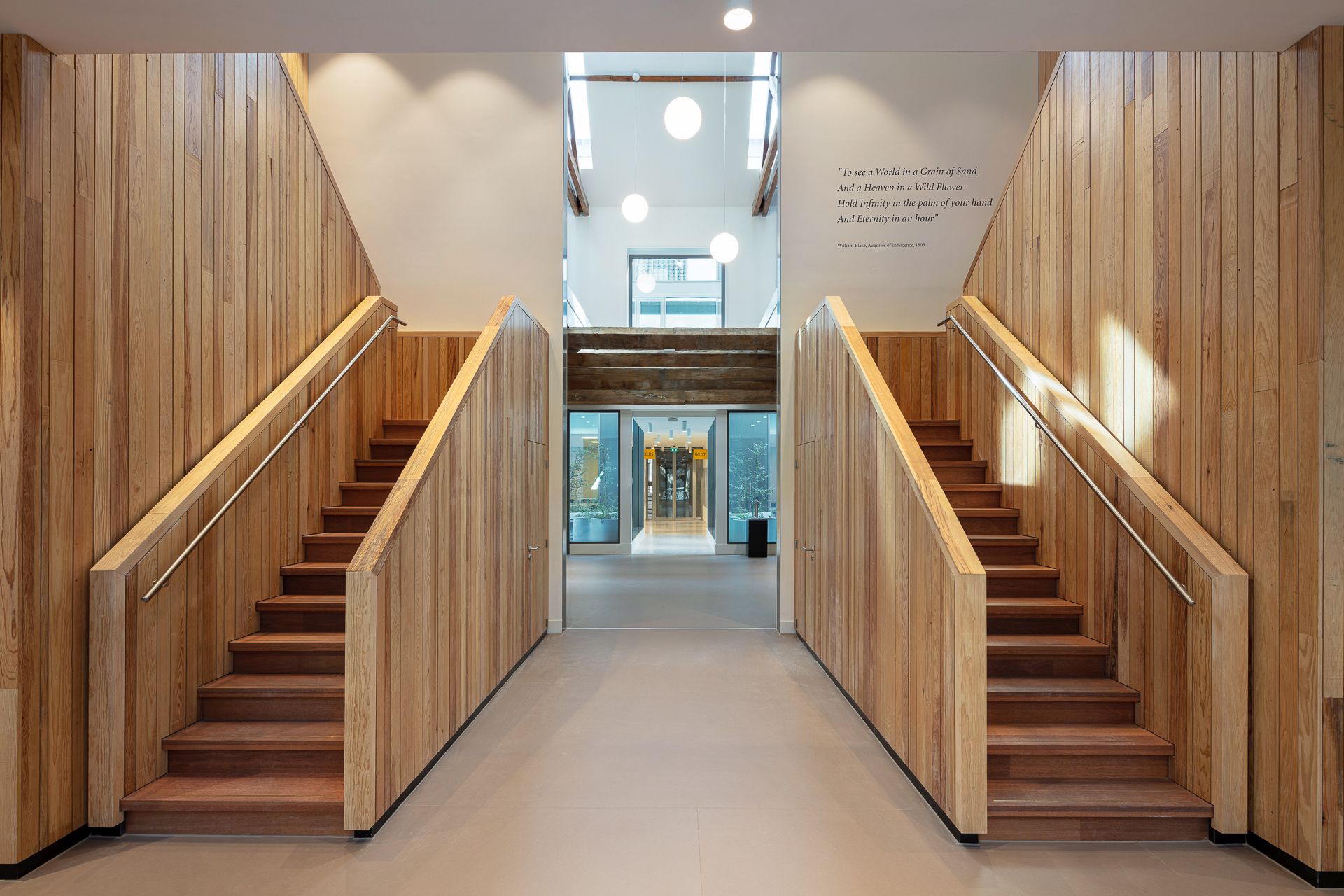
The wood used for the central staircase originates from materials that have been reused after the renovation. Photo: Stijn Poelstra. -
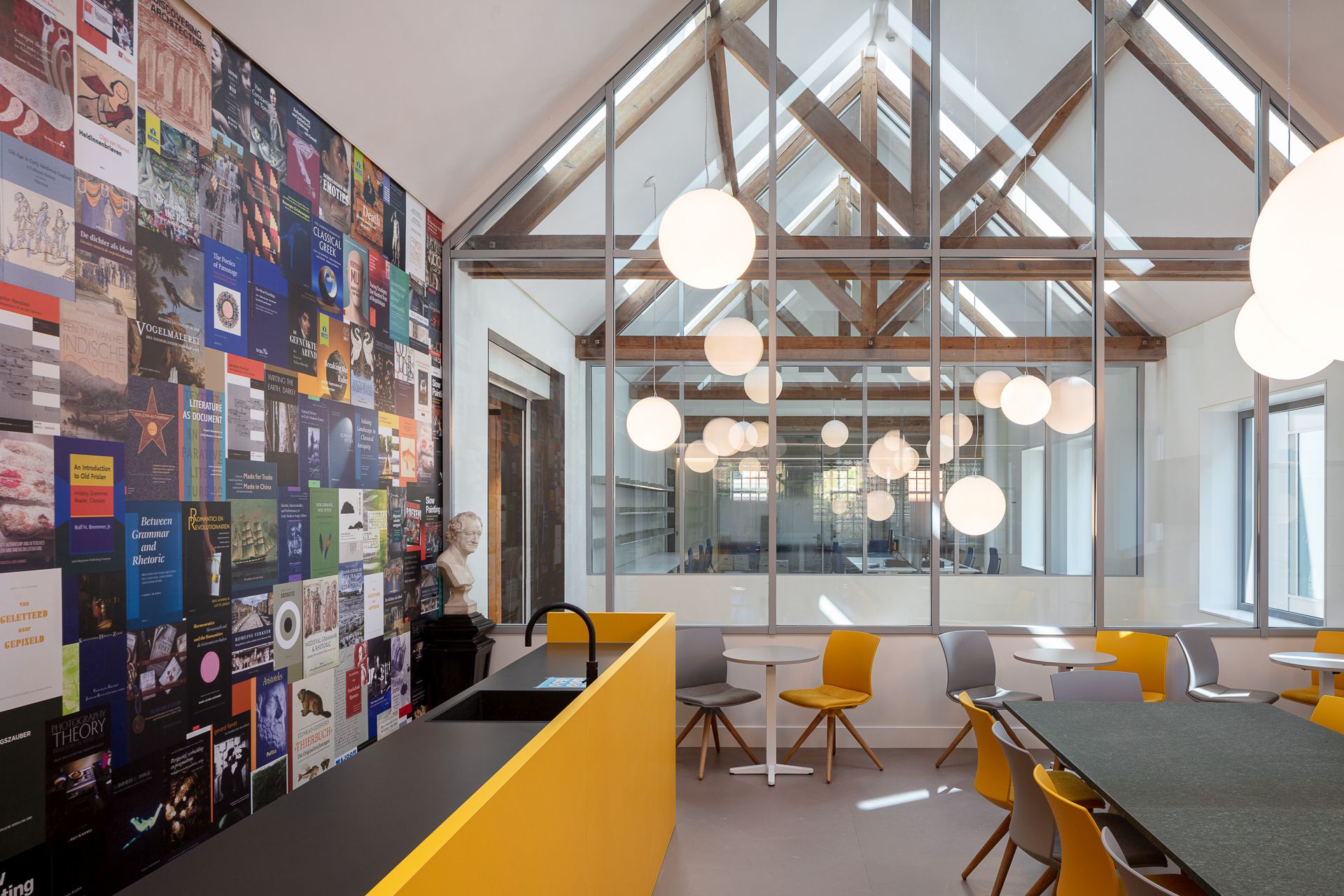
Photo: Stijn Poelstra. -
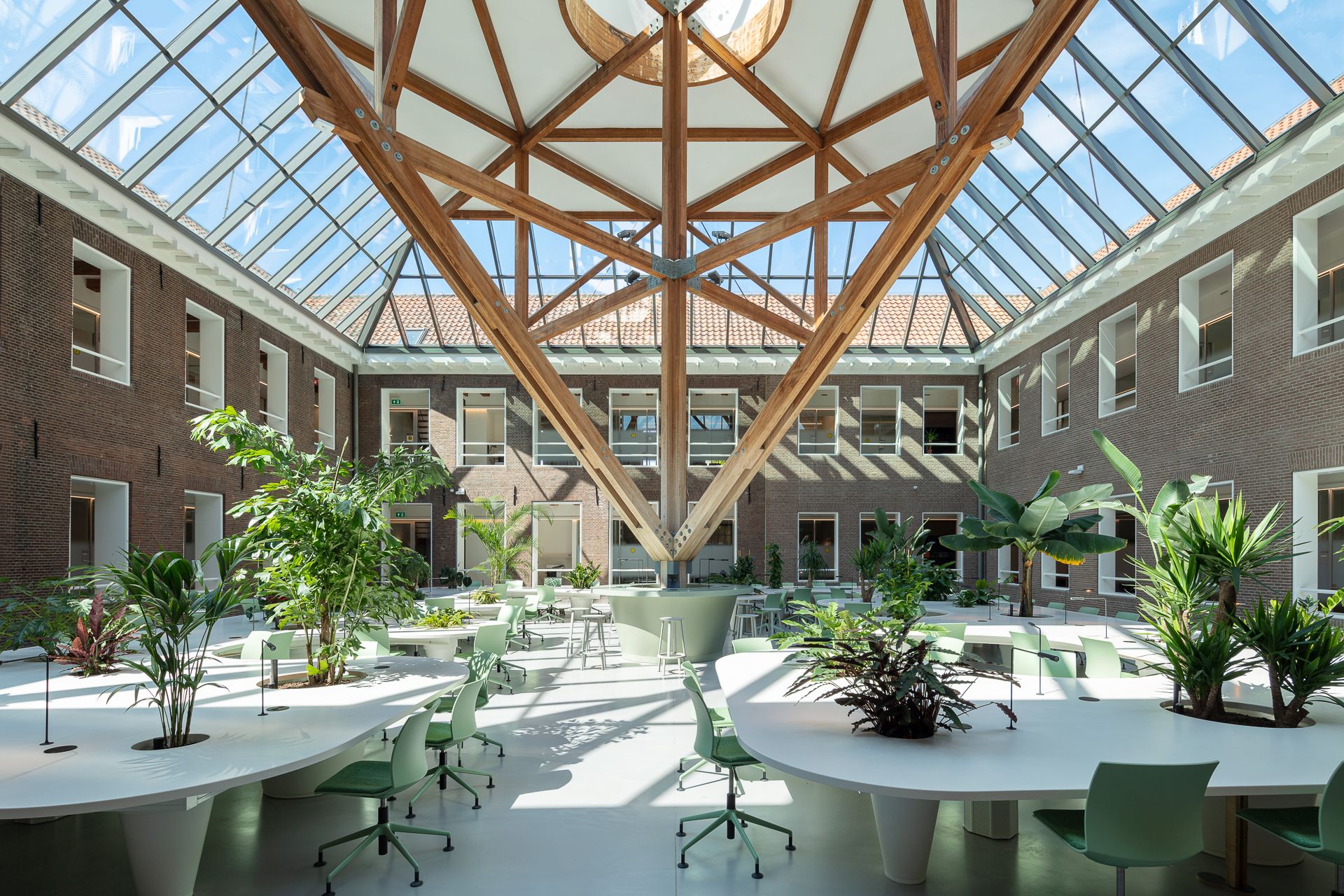
The atrium will be used as a central area to study and meet each other. Photo: Stijn Poelstra. -
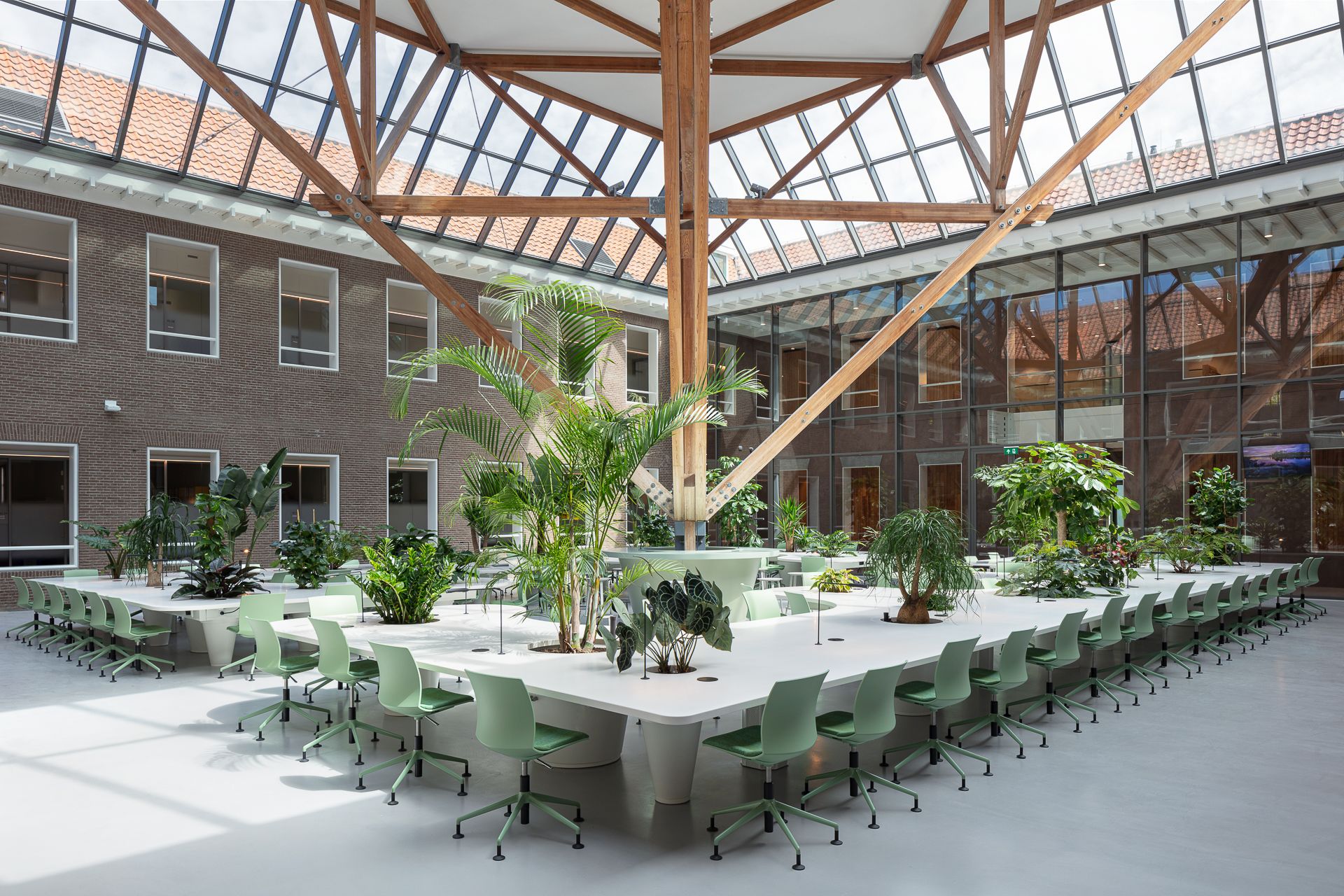
Photo: Stijn Poelstra.
The history of the building
After the gunpowder disaster of 1809, Lodewijk Napoleon (brother of the famous French emporer) supported the placement of a garrison in the city of Leiden. Thus, in 1808-1809, a big square shaped barracks was built on the former Doelenterrein of the Sint Joris and Sint Sebastiaandoelen. Between 1819 and 1821, the building was extended with a U-shaped annex. In 1840, a second square shaped annex was added. In 1979, the drastic renovation started as designed by the architect Tjeerd Dijkstra. By that time, the building was called the Arsenaal. In 1981, the Faculty of Arts (precursor of the Faculty of Humanities) began to use the building.


